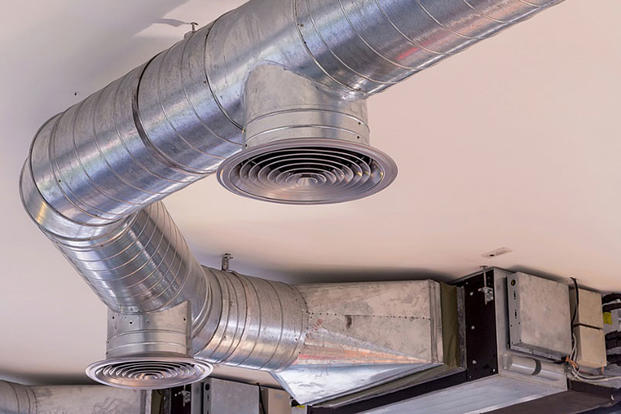Installing top flight heating and cooling equipment can lead to an energy-efficient house, but even the most efficient equipment won't work properly if the ducts that carry the heated and cooled air in your forced-air system leak.
The Environmental Protection Agency estimates that leaky ducts can rob a heating and cooling system of about 20 percent of its efficiency. If you have rooms in your house that never seem to be warm enough in winter or cool enough in the summer, or if you have energy bills that are higher than you think they should be, leaky ductwork may be the cause.
Leaky ducts not only waste energy and money, but they can lead to other problems as well:
- Fumes from household chemicals, cleaning supplies and even dust particles can enter the duct system and be circulated throughout the home.
- Leaky ducts can contribute to back drafting. Gas appliances release harmful pollutants that should be vented to the outdoors. Back drafting occurs when the pollutants are pulled back into the living space.
Steps You Can Take
Much of the ductwork in your home runs inside walls and is difficult for you to get at. However, there may be sections visible to you in the basement, utility room, attic or garage.
Ductwork usually consists of sheet metal, but it can also be fiberglass or a flexible tubing. The typical installation is nothing more than sections that are joined together. The joints could be sources of leaks, especially where a straight run of duct connects to an elbow or some other type of fitting.
Signs of a leak include dirt streaks at the connections. You can test the system yourself by holding an incense stick or even a piece of toilet paper near joints when the system is running. If the paper or the smoke moves, either by being sucked into the joint or blown away from it, you have found a leak. Other problem areas include:
- Floor, wall or ceiling registers that are not properly sealed to the ducts that service them
- Sections of duct that are disconnected from one another
- Flexible duct that is twisted or kinked, which restricts air flow
- Leaks in the cabinet between the furnace and the furnace filter
Plugging the leaks is a fairly simple process. The hardest part of the job may be getting to the problem areas, especially if the ducts run through the attic.
Seal the joint by using metal foil duct tape -- not the fabric tape that is sold as "duct tape," which will not last -- and duct mastic. Clean off the duct before applying the tape or mastic. Paint the mastic onto the joints. It's messy, but it does the job and it lasts a long time.
If you do need to work in the attic, be careful where you step. Walk only on the ceiling joists, not between the joist. The area between joists is a thin sheet of drywall that is not designed to hold any weight. You can lay planks or sections of plywood across the joists if you need to walk between them.
Insulation on the attic floor can be itchy. Wear long pants, a long-sleeve shirt and gloves.
Insulate the Ducts
Make your ducts more energy efficient by insulating exposed ducts that run through unconditioned spaces -- areas that are not heated or cooled, such as basements, attics, crawl spaces and garages. Use fiberglass foil faced duct wrap insulation. Hold the insulation in place with duct tape.
Steps for a Contractor
If you don't feel comfortable making the repairs, a professional HVAC (heating, ventilating and air-conditioning) contractor can do them for you. They can also measure the system's air flow after the repairs are made, evaluate the supply and the return air balance of the system and check for back drafting. If there are problems in any of these areas, he can make the repairs to ensure the system is as safe and efficient as possible.
-- Fran Donegan writes about homeowner repair projects and is the author of the book Paint Your Home. Fran writes on his expertise for The Home Depot. For additional information on HVAC repair and services for the home, you can visit Home Depot's website.




